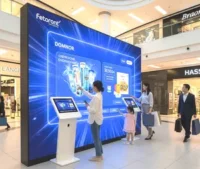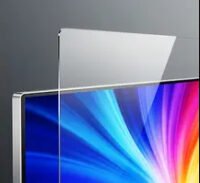Illuminate Tomorrow: The Ultimate Guide to LED Screen Innovations & Future Display Trends
Published: 7 Jul 2025
Illuminate Tomorrow: The Ultimate Guide to LED Screen Innovations & Future Display Trends
Introduction: Why LED Screen Innovations Will Transform Your World
Imagine a screen that rolls like wallpaper, a window that turns into a 4K display, or a phone that projects holograms. 💫 This isn’t sci-fi—it’s the LED revolution. From stadium billboards to your living room TV, LED technology is evolving at lightning speed. In this guide, we’ll dissect cutting-edge advancements, decode future trends,LED Screen Innovations, and arm you with actionable insights. Buckle up—the future is luminous!

Chapter 1: The LED Screen Innovations – From Dots to Dynamic Canvases
The Humble Beginnings & Key Milestones
LEDs started as tiny red dots in calculators (1970s). Today, they’re 4K cinematic canvases. Key breakthroughs for LED Screen Innovations:
- 1993: Blue LED invention (critical for white light & full-color displays 🎨).
- 2007: First OLED TV (Sony’s 11-inch marvel).
- 2020s: MicroLED breaks cover, promising limitless scalability.
Real-World Impact:
- Times Square Billboards: 16K LED screens replacing static ads.
- Consumer TVs: QLED vs. OLED wars slashing prices by 40% since 2020.
Chapter 2: How LED Screens Work – Demystified for Laymen
The Science Simplified
An LED (Light Emitting Diode) is a semiconductor that glows when electricity flows. Unlike old LCDs (which need backlights), OLEDs/MicroLEDs are self-emissive-each pixel creates its own light.
Key Components Explained:
- Pixels: Tiny clusters of red, green, blue LEDs.
- Driver ICs: Brain cells controlling brightness/color.
- Substrates: Bases (glass, plastic, or silicon) holding it all together.
Actionable Insight:
👉 *When buying a TV, check for “pixel pitch” (lower = sharper image). For a 65″ screen, aim for ≤0.9mm.*
Chapter 3: Current Market Leaders – Who’s Dominating & Why?
The Titans & Their Tech Arsenal
| Company | Flagship Innovation | Real-World Use |
| Samsung | QD-OLED (Quantum Dot + OLED) | S95B TV – Vibrant colors, no burn-in 🖥️ |
| LG | Transparent OLED | Store windows doubling as ads (e.g., BMW showrooms) |
| Sony | Crystal LED (MicroLED) | Virtual film sets replacing green screens 🎬 |
Emerging Player: BOE (China) – Mass-producing flexible OLEDs for foldable phones.
Chapter 4: Emerging Technologies – The Game Changers
MicroLED – The “Holy Grail” of Displays
- What it is: Microscopic LEDs (<100 microns) self-emitting light.
- Why it matters: Brighter than OLED, no burn-in, ultra-thin.
- Real Example: Samsung’s The Wall – Modular 292-inch 8K TV (💰$150k).
Flexible & Rollable Screens
- Tech: OLEDs on polymer substrates. Bend, fold, or roll!
- Real-World: LG’s Signature OLED R (rolls down like a blind 🪟).
Holographic & 3D Displays
- Innovation: Light-field tech creating 3D without glasses.
- Use Case: Looking Glass Factory holographic displays for designers.
Transparent LEDs
- How: LEDs on see-through substrates (e.g., glass).
- Impact: Smart fridge doors, AR windshields 🚗.
Chapter 5: Future Display Trends – 2025-2030 Predictions
Hyper-Realism Takes Over
- 8K-16K Resolution: Normalized by 2028 (Japan’s Super Hi-Vision already tests 16K).
- HDR++: High Dynamic Range mimicking real-world luminance (10,000 nits).
AI-Integrated Smart Displays
- Tech: Sensors + AI adapting brightness/content to your mood 😊.
- Example: Samsung’s Projection Bot – Follows you, projects on walls.
Sustainability Revolution
- Trend: Recyclable materials & low-power LEDs (e.g., GaN-on-Si tech cutting energy by 30%).
- Brand Spotlight: Panasonic’s eco-driven OLED factories.
AR/VR Merges with Real World
- Future Vision: MicroLED contact lenses overlaying digital data onto reality.
- Pioneer: Mojo Vision (FDA-trialing AR lenses).
Chapter 6: LED Advancements Deep Dive – Tech Specs Unpacked
MiniLED vs. MicroLED vs. OLED
| Feature | MiniLED | MicroLED | OLED |
| Brightness | High (1,000-4,000 nits) | Extreme (5,000+ nits) 🌞 | Moderate (800-1,000 nits) |
| Lifespan | 100,000 hrs | 500,000+ hrs | 30,000 hrs (risk of burn-in) |
| Best For | Budget 4K/8K TVs | Luxury large screens | Phones, premium TVs |
Quantum Dots – The Color Magicians
- Science: Nano-crystals converting light into ultra-pure colors.
- Brand Play: TCL’s QLED Pro TVs hitting 98% DCI-P3 color accuracy.
Chapter 7: Real-World Applications – Changing Industries
Healthcare
- Surgical OLEDs: Panasonic’s 4K displays for precision surgery 🔬.
- UV-C LED Screens: Killing pathogens on touchscreens (post-COVID innovation).
Retail & Advertising
- Smart Shelves: Tesco’s LED price tags updating in real-time.
- Holographic Kiosks: Gucci’s virtual try-ons boosting sales by 27%.
Entertainment
- LED Stages: Taylor Swift’s Eras Tour – 100M pixels creating immersive worlds.
- Gaming: ASUS’ 360Hz OLED monitors for zero-motion blur.
Chapter 8: Actionable Insights – For Consumers & Businesses
Buying Guide in 2024
- For Gamers: Choose 120Hz+ refresh rate + OLED (perfect blacks).
- For Businesses: Opt for COB (Chip-on-Board) LEDs – durable for outdoor signage.
- Avoid: Cheap “LED-like” labels – true LEDs are self-emissive.
ROI Tips for Brands
- Digital Signage: Interactive LEDs increase engagement by 68% (Source: Nielsen).
- Energy Savings: Switch to MiniLED – 40% less power vs. LCD.
FAQs: Your LED Questions Answered
Q1: Will MicroLED TVs ever be affordable?
A: Yes! Mass production scales by 2026 – prices could drop 60% (e.g., from $50k to $20k).
Q2: Are OLED screens bad for eyes?
A: No more than LCDs. Use flicker-free modes & dark themes to reduce strain.
Q3: What’s next after 8K?
A: 16K for VR (human eye resolution) & micro-displays for AR glasses.
Q4: Can LEDs work in extreme weather?
A: Yes! IP68-rated LEDs (e.g., Unilumin) withstand -40°C to 85°C.
Q5: How do transparent LEDs work?
A: LEDs mounted on glass/clear films – pixels light up while gaps stay see-through.
Q6: Emerging technologies examples?
A: Emerging technologies explain in following lines
- Quantum Computing
Uses quantum bits (qubits) to solve problems millions of times faster than classical computers.
Real-world: Drug discovery (e.g., IBM’s Eagle processor simulating molecules 💊).
- Brain-Computer Interfaces (BCIs)
Connects brains directly to devices, decoding neural signals into commands.
Real-world: Neuralink’s implants enabling paralyzed patients to control computers 🧠.
- Green Hydrogen Energy
Produces hydrogen fuel via renewable-powered electrolysis (zero carbon emissions).
Real-world: Germany’s trains & Japan’s “Hydrogen Society” replacing fossil fuels 🌱.
- Nuclear Fusion
Mimics the sun’s energy by fusing atoms (unlimited clean power).
Real-world: ITER’s reactor (2025) targeting net-positive energy output ☢️→💡.
Self-emissive micro-scale LEDs for ultra-bright, burn-in-free screens.
Real-world: Samsung’s modular “The Wall” TVs (292-inch 8K cinema displays 🖥️).
Q7: Emerging technology definition?
A: Emerging technologies are novel, rapidly evolving innovations still in development or early adoption that possess the potential to significantly disrupt industries, behaviors, or capabilities.
Examples: Quantum computing, advanced AI, or next-gen displays like MicroLED screens in their infancy.
💡 Why it matters: These technologies bridge today’s limitations with tomorrow’s possibilities—think AI revolutionizing healthcare or flexible LEDs enabling rollable TVs!
Q8: what is emerging technology?
A: Emerging technology refers to novel, rapidly advancing innovations in early development or adoption that have high disruptive potential to transform industries, society, or daily life 🌱⚡.
Example: Quantum AI, MicroLED displays, or synthetic biology—all pushing boundaries beyond current
Conclusion: The Light-Paved Path Ahead
From foldable phones to holographic boards, LED Screen Innovations aren’t just changing screens—they’re reshaping human experiences. As MicroLEDs democratize and AI merges with displays, your world will become smarter, brighter, and infinitely more connected. Stay curious, stay illuminated! 💡
Invest in scalable tech (like modular MicroLED) – it’s future-proof!

- Be Respectful
- Stay Relevant
- Stay Positive
- True Feedback
- Encourage Discussion
- Avoid Spamming
- No Fake News
- Don't Copy-Paste
- No Personal Attacks



- Be Respectful
- Stay Relevant
- Stay Positive
- True Feedback
- Encourage Discussion
- Avoid Spamming
- No Fake News
- Don't Copy-Paste
- No Personal Attacks





